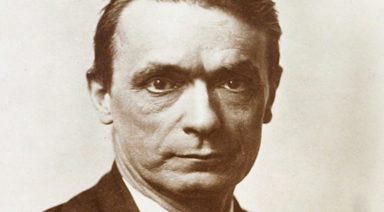New Zealand Gives Maori Volcano Human Rights

In a move to honor its indigenous people and provide retribution for colonialist oppression, New Zealand is giving human rights to a Māori volcano on the country’s North Island. Mount Taranaki will now be afforded all the legal rights of a person and is the country’s third natural feature to be given this designation.
After Lonely Planet – the largest travel guide publisher in the world – named Mount Taranaki the second-best location to visit, officials in New Zealand decided to protect the dormant volcano in a way that honored their native people. The mountain’s entitlement comes after the country gave the same human rights protection to the Whanganui River earlier in 2017.
Mount Taranaki is a 120,000-year-old volcano that is New Zealand’s most frequently hiked mountain. Its new designation would make punishment for anyone who harms the mountain tantamount to harming a member of the Māori people. The local tribes will work in conjunction with New Zealand government to maintain the sacred feature and ensure its protection.

Māori natives hold the volcano to the same esteem as one of their own family members, or whanau, and consider it to be an ancestor. In Māori philosophy, humans are considered to be part of the universe and, rather than domineering the natural world, they consider humanity to be an extension of it like any other feature.
This seems to mirror the ideas of shamanism and many indigenous tribes whose spirituality and religion is based on the ideology of animism, the belief that all material things have a spirit. It is common for indigenous tribes and shamans to explain that all they know about our world came from conversations with plants, trees, and nature.
In western society, we give human rights to corporations in much the same way. Corporate personhood gives these entities names, legal rights, and the ability to spend money in political campaigns, all while remaining entirely separate from the individuals who work there. If we think this makes sense to provide privileges to what is essentially an immaterial concept, then it makes perfect sense that natural features should be given personhood with legal protections.
New Zealand is setting a precedent for the world to follow, and it’s doing it while acknowledging to its indigenous people that imperialism from the 19th century demands retribution. The act is part of an apology particularly for the British Crown’s lack of enforcement of the Treaty of Waitangi – a pact between the Māori and British government originally intended to protect native rights.
Could New Zealand’s example lead to similar actions in other nations with histories of oppression against native people? In the U.S. reparations are rarely made to Native American groups, while indigenous land and protections continue to diminish.
Can Meme Stocks Shift the Economy in Favor of the Little Guy?

The financial system has been turned on its head in the past few months with the rise of what has been named “meme stocks.” But is this grassroots movement of regular everyday investors a passing trend? Or could they really transform the way our economy works going forward?
“Meme stocks,” called such because they are ordinary stocks fueled by people through social media, can spike in value based on the zeitgeist and not the fundamentals of the companies they represent, and as a result can often be highly volatile. Made famous by the popular subreddit r/wallstreetbets, this is truly a grassroots movement.
But even with the volatility that comes with these stocks, investors are not shying away from them. Many investors are doubling down, despite warnings from financial institutions, or perhaps in spite of them. But what is driving the popularity of meme stocks, and why do they continue to grow contrary to what markets dictate?
Zeus Yiamouyiannis, author of “Transforming Economy: From Corrupted Capitalism to Connected Communities,” explains:
“Well the first thing I think is the larger social phenomenon of the little guy getting screwed, and the big guy rigging the game. And it has never been any more rigged and the concentration of wealth has never been more dramatic, and so what happens is it creates this groundswell of desire to strike back at an unfair system, to strike back at these profiteers, and to win one for the little guys.”





































